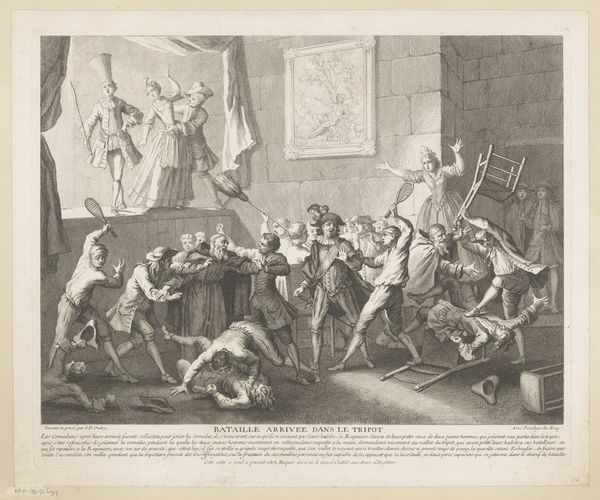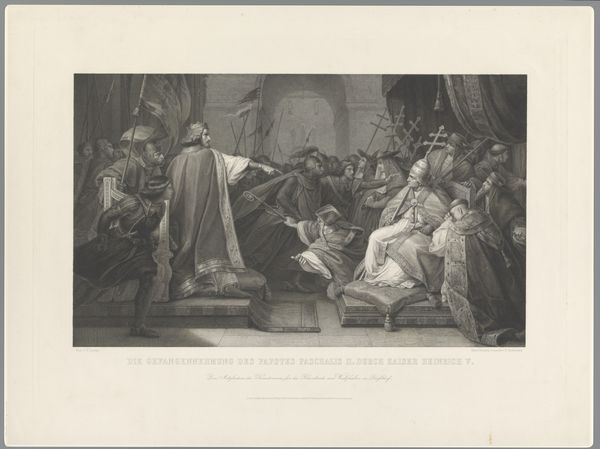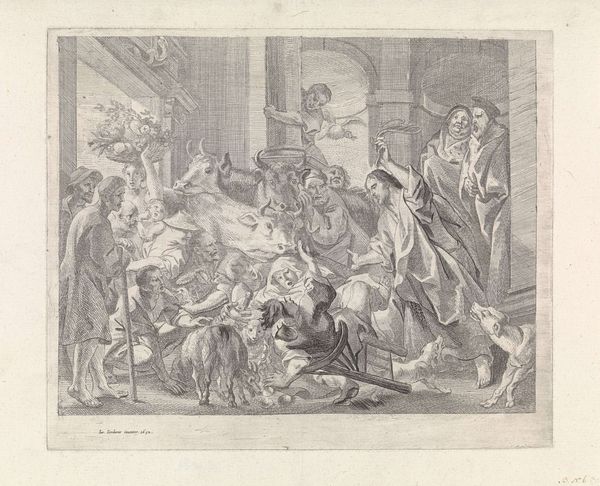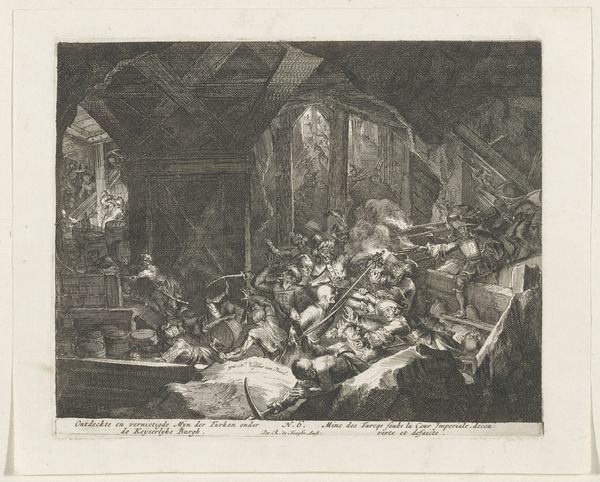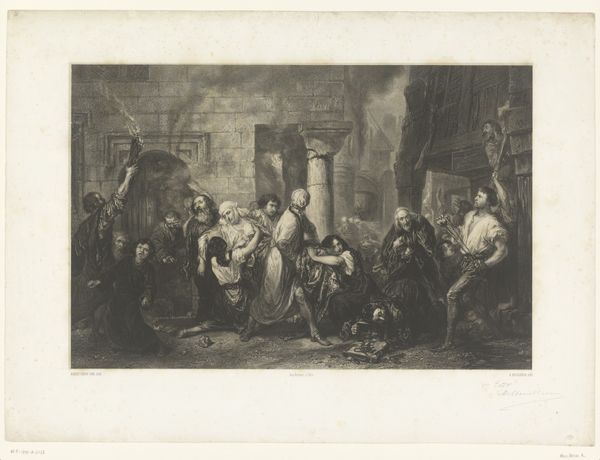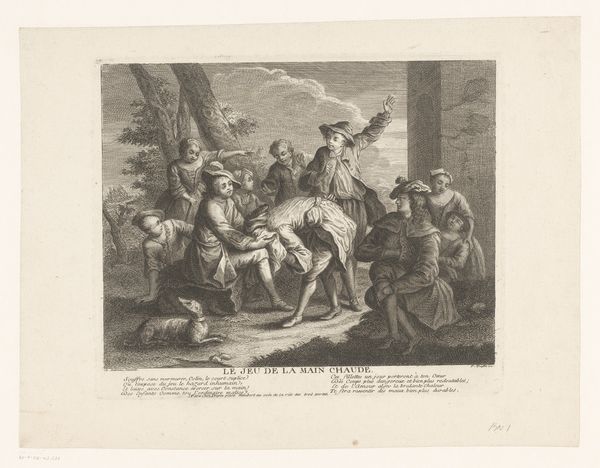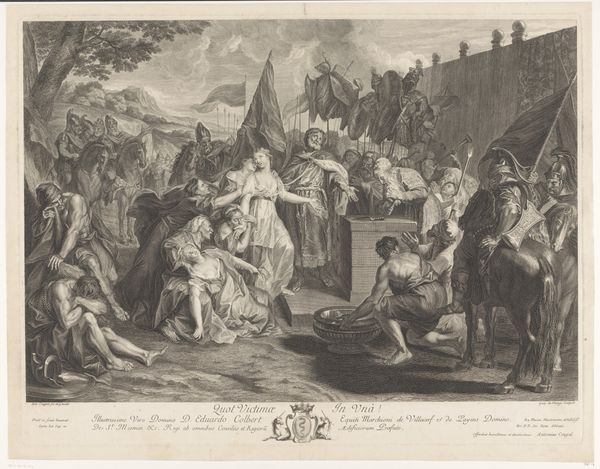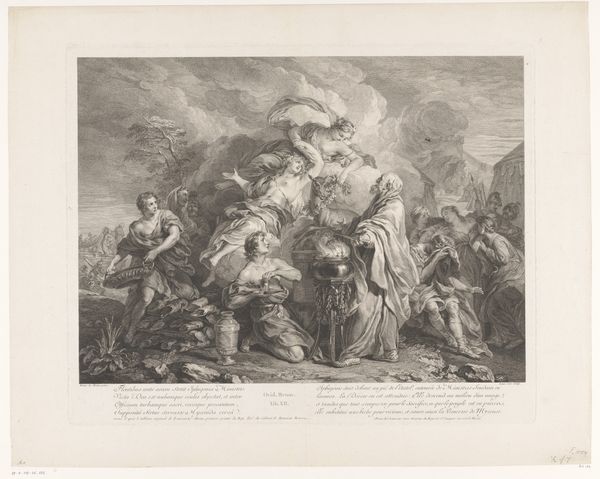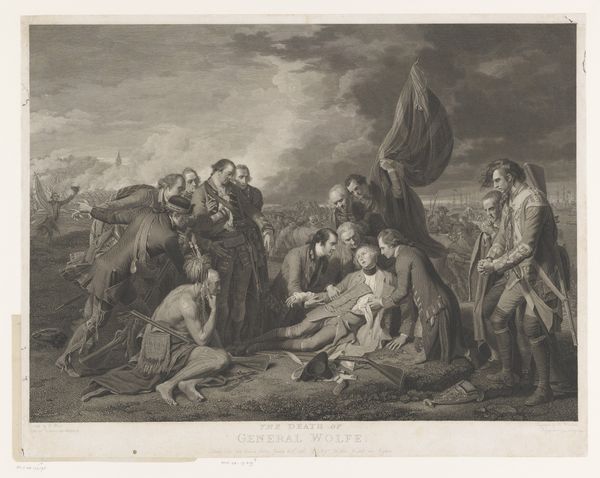
William Walworth vermoordt Wat Tyler onder toeziend oog van Richard II, koning van Engeland 1796
0:00
0:00
engraving
#
narrative-art
#
figuration
#
romanticism
#
history-painting
#
engraving
Dimensions: height 496 mm, width 629 mm
Copyright: Rijks Museum: Open Domain
Curator: Here we have a rather striking engraving dating back to 1796. The piece, by Anker Smith, depicts "William Walworth murdering Wat Tyler under the eyes of Richard II, King of England." Editor: My first impression is how meticulously detailed and stark this engraving is. The drama of the scene unfolds almost theatrically, a quality heightened by the stark contrasts and meticulous line work. There's a dynamic chaos captured within its grayscale tones. Curator: Indeed. Smith’s rendering of this historical event positions the Peasants' Revolt of 1381 within a broader framework of power, class struggle, and the brutal suppression of dissent. Wat Tyler's dramatic death, framed by the English King, offers a poignant critique of the feudal system and its inherent violence. Editor: The composition seems almost choreographed. The lines of sight, the poses of the figures—they all converge toward the central figure of Wat Tyler as he is brought down. This intense focalization serves the dramatic representation and historical contextualization perfectly. How can one achieve such complexity of layering just using black lines? Curator: Well, what fascinates me is how Smith manages to infuse Romanticism with the blunt reality of power. The narrative becomes not just a historical depiction but an active interrogation of authority and social order. Notice Richard II. His face isn't necessarily disapproving of Walworth's act. His presence is just another cog of a biased societal machine. Editor: That’s a fair interpretation. For me, the formal aspects of this engraving work synergistically to amplify that sense of injustice. Smith’s mastery creates not merely an image, but an experience of historical tension. Curator: Absolutely. Anker Smith certainly leaves us much to consider about how we represent historical violence, and what meanings get reinforced—or subverted—through its visual rendering. Editor: Ultimately, this artwork serves as a sharp reminder of how an artist’s choices in composition and tonality influence our understanding of social issues and the nature of humanity's struggles through history.
Comments
No comments
Be the first to comment and join the conversation on the ultimate creative platform.
